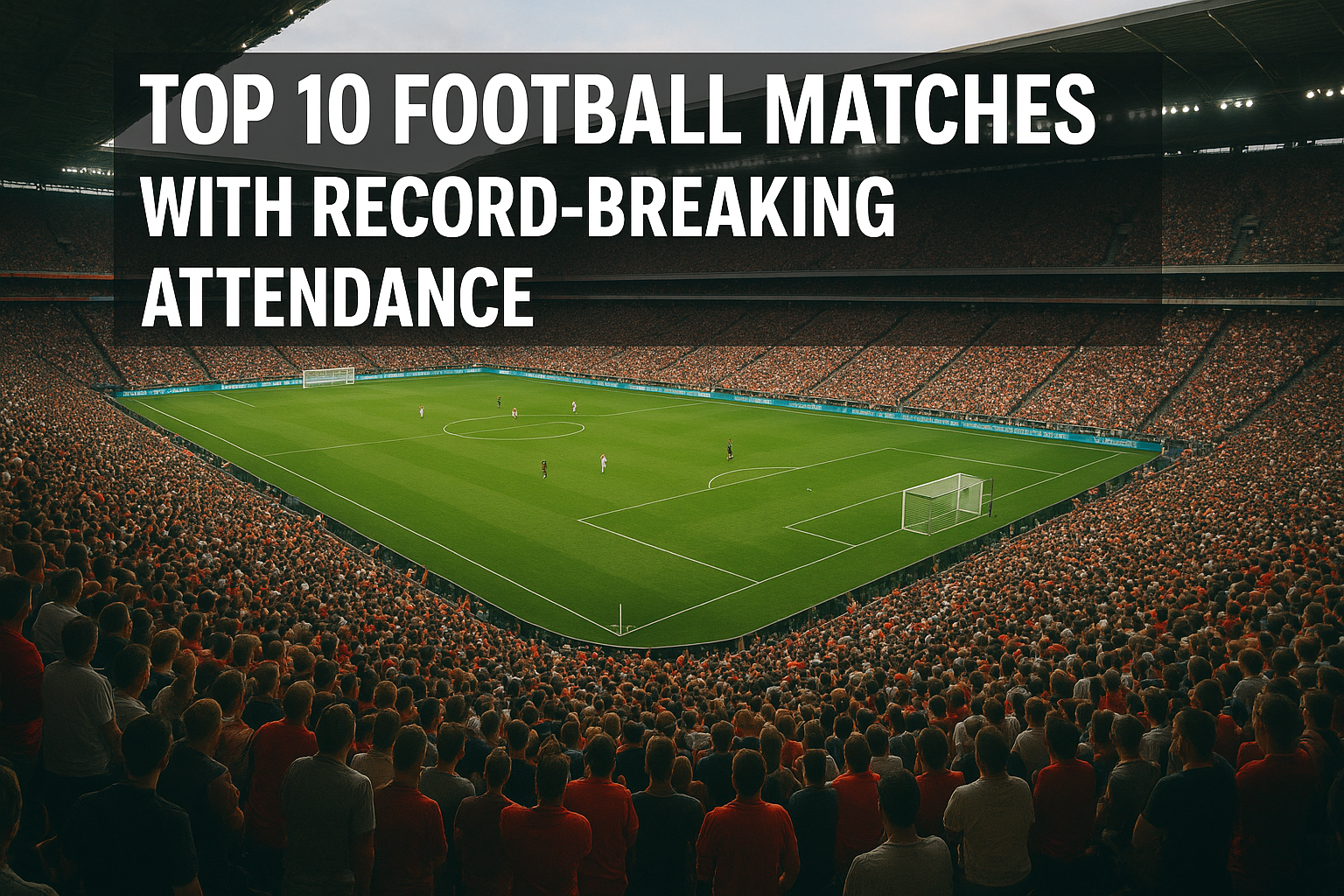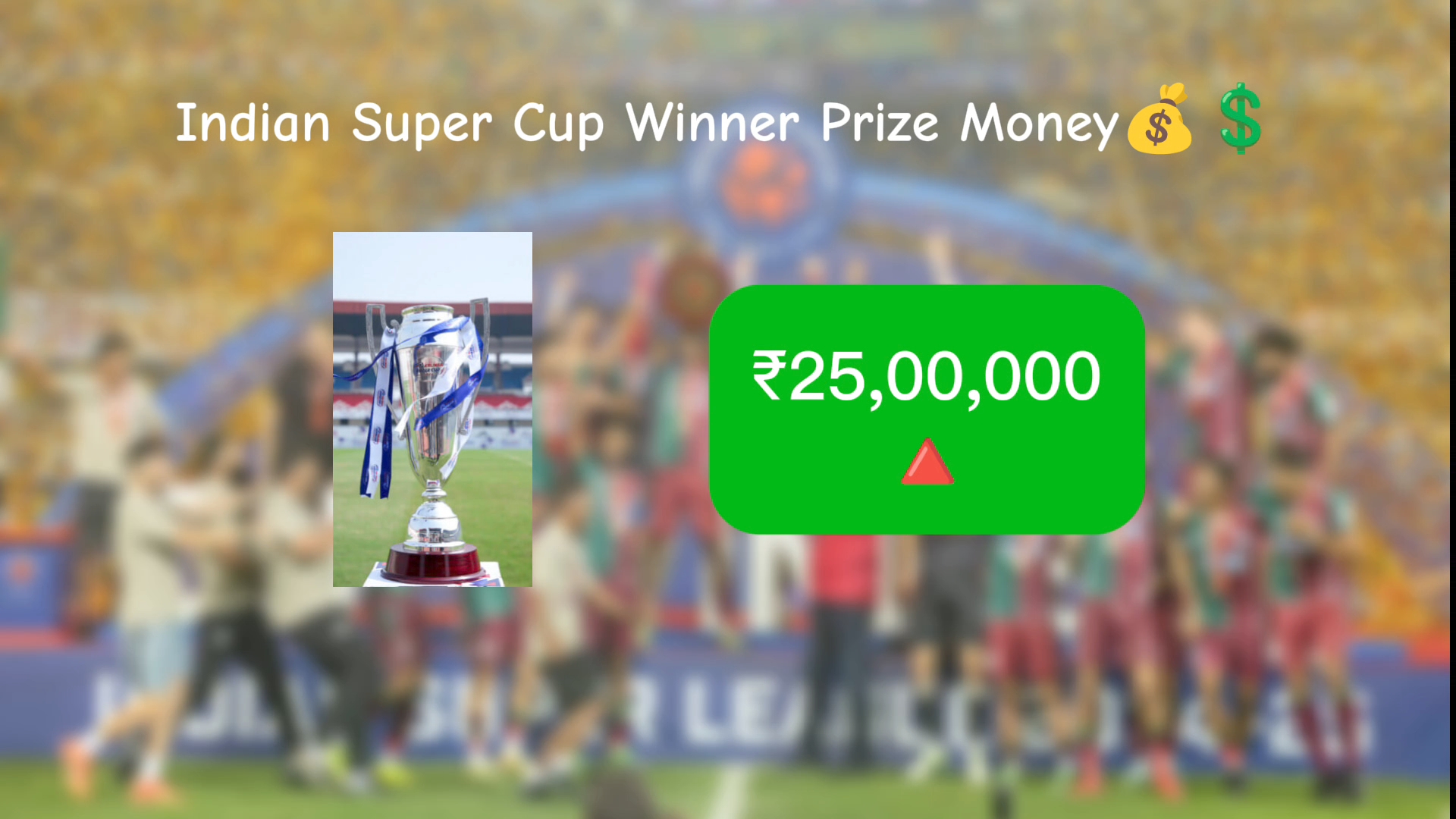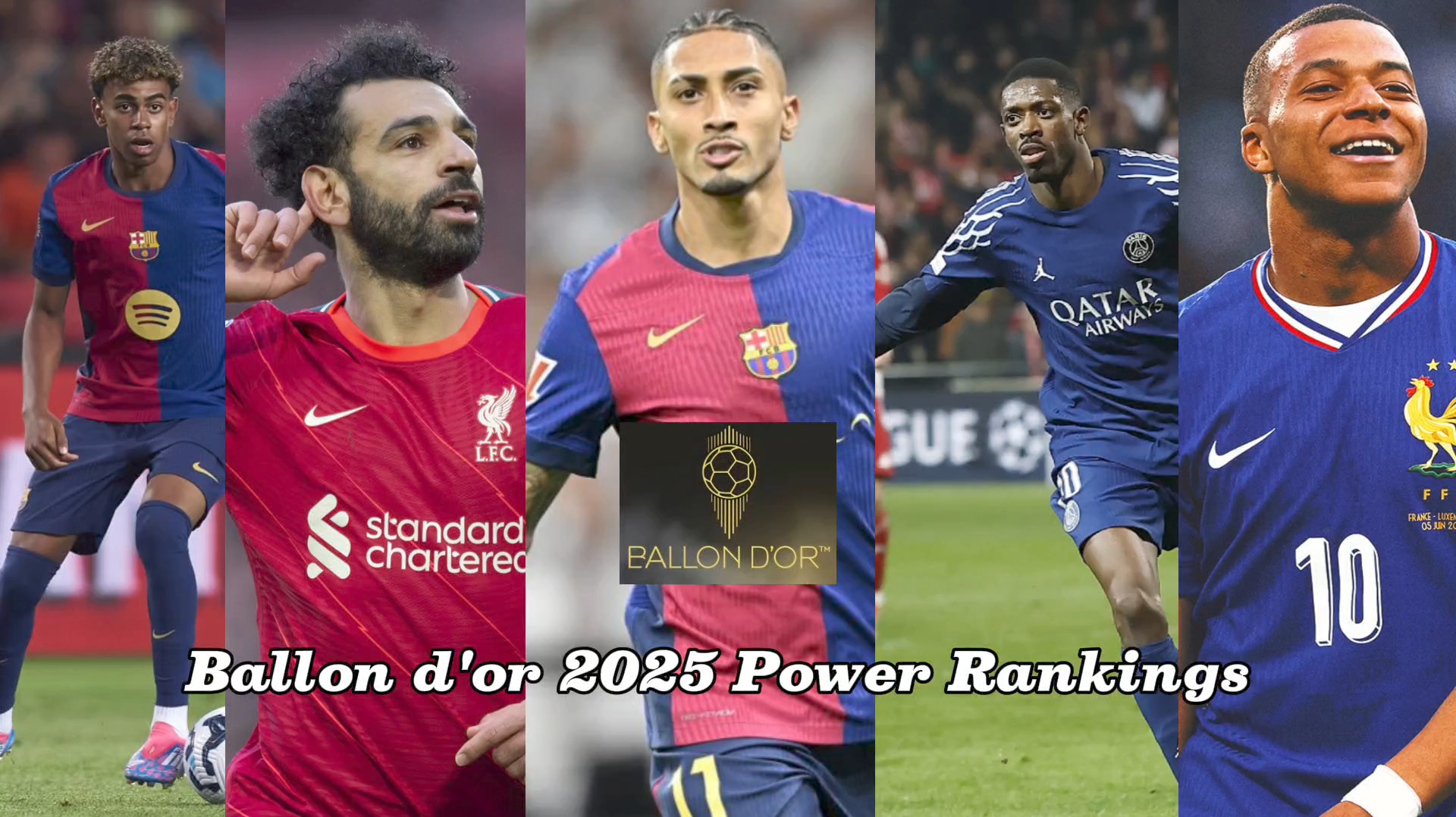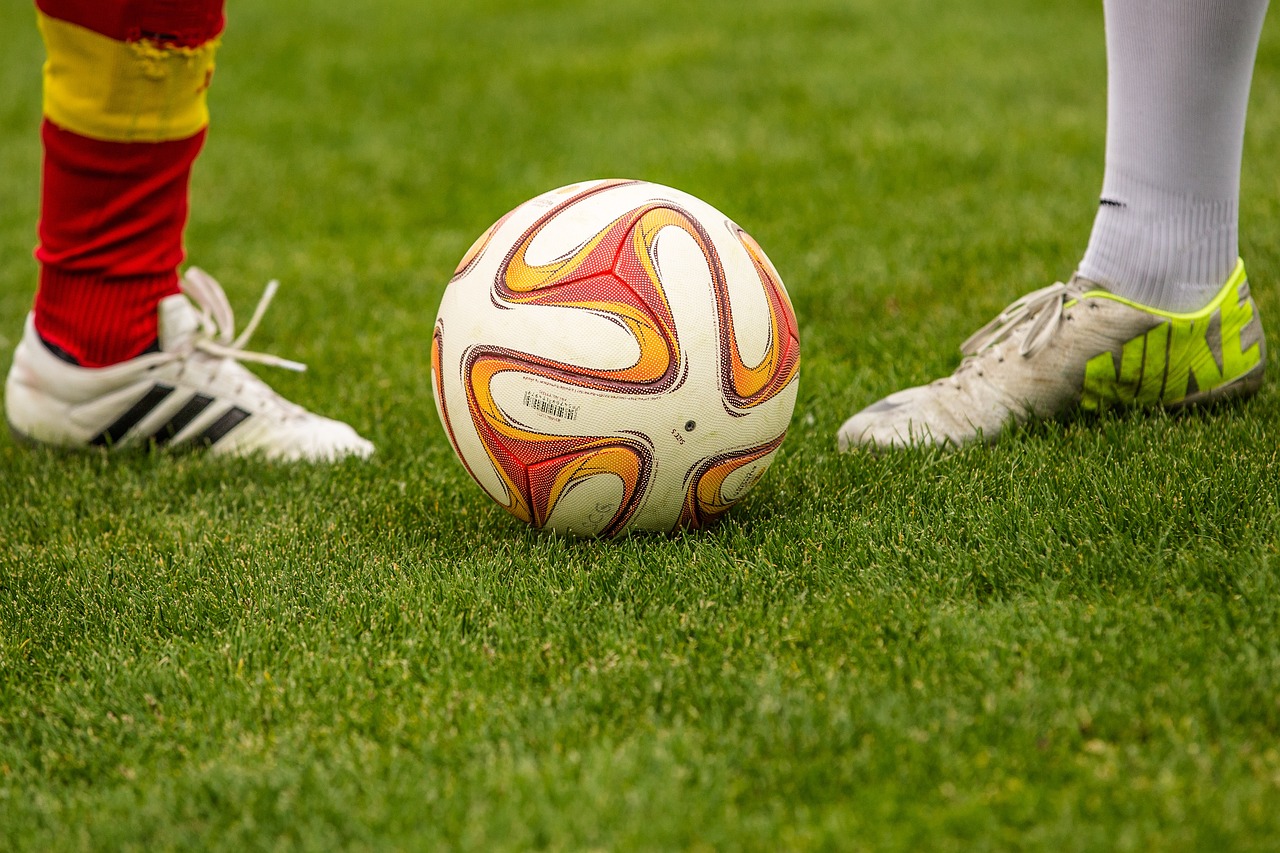For every football lover, the biggest dream is to wear their country’s national team jersey. Representing your nation is not just about playing football – it’s about carrying the hopes of millions of fans. But the question is: how can someone reach that level?
The answer is not easy, but if you follow the right path, it may be possible to achieve the dream. Let’s explore the steps to playing for the national football team.
1. Start Early and Learn the Basics
Most professional players start playing football from a young age – often before the age of 10. Early training helps you:
Develop ball control
Improve fitness and agility
Understand the game’s basics
Mental Strength: The ability to handle pressure, maintain focus, and demonstrate leadership qualities often separates good players from great players. Scouts assess mental resilience through behavioral evaluation and performance under pressure. (Sometimes a good player may perform poorly because he cannot handle pressure, while an average player may perform well by managing pressure effectively.)
👉 Example: In India, many players begin at local clubs, school teams, or community grounds before moving to academies.
2. Join a Football Academy
Training at a proper academy is the foundation. Coaches there teach discipline, teamwork, and advanced techniques.
In India, players can join academies like AIFF Elite Academy, Minerva Academy (best Academy in India), Bhaichung Bhutia Football Schools, or Reliance Foundation Young Champs.
In other countries, each federation has licensed academies linked with professional clubs.
3. Play Competitive Football
The more you play in competitive tournaments, the more chances scouts have to notice you.
School and college tournaments
District and state championships
Youth leagues organized by football associations
👉 Example: In India, state leagues like the Santosh Trophy (senior men’s state competition) or Subroto Cup (school-level tournament) have been starting points for many players.
4. Get Scouted
National teams don’t just pick random players. Scouts and coaches watch leagues, tournaments, and academies.
If you perform consistently, you’ll be invited to state-level trials or AIFF scouting camps in India.
In countries like Brazil or Spain, scouts often visit even local matches to discover hidden talents.
5. Move to Professional Clubs
To get noticed at the national level, you need to play professional football.
In India, the path is: local league → I-League 2nd Division → I-League / ISL → National Team.
In other countries, the structure may be different, but the principle is the same: play at the highest club level possible.
6. Focus on Fitness and Discipline
At the international level, talent is not enough. National teams look for:
Stamina and strength
Strict diet and recovery routines
Professional behavior on and off the pitch
👉 Example: Sunil Chhetri, India’s legendary captain, is known not only for his skills but also for his strict discipline and fitness, even at the age of 39+.
7. National Trials and Call-Ups
If you perform well at club and state levels, you will be called for:
National trials (U-15, U-17, U-20, U-23)
Senior team training camps
This is the moment where years of hard work pay off. From there, you must prove yourself to coaches and selectors.
8. Never Stop Improving
Even after wearing the national jersey, you must keep improving. Football is a highly competitive sport – if you stop working hard, someone else will take your place.
Common Mistakes to Avoid
❌ Waiting too long to take football seriously
❌ Ignoring fitness and only focusing on skills
❌ Not participating in official tournaments
❌ Poor discipline or lack of consistency
Final Words
Playing for your national football team is not easy – but it’s not impossible either. Thousands dream of it, but only the most dedicated, disciplined, and passionate players make it.
If you’re from India, your path may be tougher compared to countries with bigger football systems, but examples like Sunil Chhetri, Gurpreet Singh Sandhu, and Sahal Abdul Samad show that determination can break barriers.
So lace up your boots,train hard, Learn from mistakes, stay focused, and one day, you might proudly sing your national anthem on the pitch, wearing your country’s colors. 🌍⚽
Tag: FIFA
-

How to Play for Your National Football Team: The Complete Guide to International Football Success
-

Top 10 Football Matches With Record-Breaking Attendance
When we talk about football, we often think of goals, rivalries, and legends like Pelé, Maradona, Ronaldo, and Messi. But another fascinating aspect of the game is the crowd. The energy inside a stadium, the roar of tens of thousands of fans, and sometimes even over 100,000 spectators—it’s what makes football unlike any other sport.
Let’s dive into the Top 10 football matches with the highest attendance in history—where passion and numbers broke all records.
1. Brazil vs Uruguay – 1950 FIFA World Cup Final
- Stadium: Maracanã, Rio de Janeiro, Brazil
- Attendance: Official 173,850 (Unofficially ~199,854)
The iconic “Maracanazo” remains the biggest shock in football history. Uruguay defeated hosts Brazil 2–1 in front of the largest crowd ever recorded at a football match. Some accounts suggest the real number was close to 200,000 as fans stormed the gates.
2. Brazil vs Spain – 1950 FIFA World Cup (Final Round)
- Stadium: Maracanã
- Attendance: 152,772
Just days before the final, Brazil’s match against Spain also drew a jaw-dropping crowd. The Maracanã was bursting with fans, giving the Seleção an atmosphere of invincibility.
3. Brazil vs Sweden – 1950 FIFA World Cup (Final Round)
- Stadium: Maracanã
- Attendance: 138,886
The same World Cup saw another enormous crowd when Brazil faced Sweden. It’s safe to say the 1950 tournament was the ultimate example of football fever in one stadium.
4. Scotland vs England – 1937 British Home Championship
- Stadium: Hampden Park, Glasgow
- Attendance: 149,415
This remains the largest ever attendance for a European international match. Scotland defeated England 3–1 in front of a sea of fans that filled Hampden Park.
5. Celtic vs Leeds United – 1970 European Cup Semi-Final (2nd Leg)
- Stadium: Hampden Park
- Attendance: 136,505
A record for UEFA competitions. Scottish giants Celtic faced Leeds in a fiery clash, and the crowd was so big that it felt like the entire city of Glasgow had shown up.
6. Benfica vs Porto – 1987 Primeira Divisão
- Stadium: Estádio da Luz, Lisbon
- Attendance: ~135,000
Portugal’s two biggest clubs met in a clash of titans that attracted a massive crowd. It’s the highest recorded attendance in Portuguese football history.
7. East Bengal vs Mohun Bagan – 1997 Federation Cup Semi-Final
- Stadium: Salt Lake Stadium, Kolkata, India
- Attendance: ~134,000
India’s most famous derby drew one of the largest crowds ever for a domestic football match. The passion of the Kolkata derby is legendary, and this day proved it.
8. Bolton Wanderers vs West Ham United – 1923 FA Cup Final (“White Horse Final”)
- Stadium: Wembley Stadium, London
- Attendance: Official 126,047 (Unofficial estimates up to 300,000!)
The very first FA Cup final at Wembley saw the stadium hopelessly overcrowded. A mounted policeman on a white horse famously helped control the crowds, giving the match its historic nickname.
9. Real Madrid vs Juventus – 1962 European Cup Final
- Stadium: Santiago Bernabéu, Madrid
- Attendance: ~125,000
A golden era of European football brought in massive numbers. Madrid’s loyal fanbase packed the Bernabéu for this epic showdown.
10. Mexico vs Brazil – 1968 Olympic Football Tournament
- Stadium: Estadio Azteca, Mexico City
- Attendance: ~120,000+
The Azteca, known for its intimidating atmosphere, saw one of its biggest turnouts during the Olympics. It set the tone for the stadium’s legendary status.
Final Thoughts
Football isn’t just about the players – it’s about the people. The passion, the chants and the sheer size of these crowds remind us why this game is called one of the greatest in the world’s sport.
From the historic Maracanazo in 1950 to the Kolkata derby in India, these matches prove Proving that football unites millions of fans, united by love for the game.
👉 Which of these matches surprised you the most? Would you rather be in the Maracanã in 1950 or the Salt Lake Stadium in 1997?
-

🏆 How Much Money Did the AFC Champions League Winner & Runner-Up Teams Get in 2025?
The AFC Champions League 2024–25 season concluded with incredible drama and high-level football. But beyond glory and silverware, how much prize money did the winner and runner-up take home?
In this blog, we break down the official cash rewards awarded to both finalists of Asia’s biggest club competition — along with bonuses and comparisons to other leagues. If you’re curious about the financial side of Asian football, you’re in the right place.
💰 AFC Champions League 2025 Prize Money Breakdown
As per the Asian Football Confederation (AFC) official announcement:
- 🥇 Winner: $4 million (USD)
- 🥈 Runner-up: $2 million (USD)
These figures were confirmed on the official AFC website, and reflect the AFC’s mission to raise the prestige and competitiveness of Asian football on a global scale.
📌 Note: These amounts are exclusive of bonuses, matchday revenue, and sponsorship deals.
🏟️ Why the Prize Money Matters
The AFC Champions League’s prize structure is designed to help clubs grow financially and compete with elite teams worldwide. Winning the tournament doesn’t just bring continental fame — it also gives clubs:
- Huge boosts in sponsorship
- Automatic qualification for the FIFA Club World Cup
- Visibility for players and staff in global markets
📈 Comparison with Other Leagues
Competition Winner Prize Money Runner-up UEFA Champions League ~$20M (Excl. bonuses) ~$15M AFC Champions League $4M $2M CAF Champions League ~$2.5M ~$1.25M Asian clubs are catching up fast in terms of prize incentives, especially with rising investments in leagues like the Saudi Pro League and Indian Super League.
📌 Real Example: AFC Final 2025
In the 2025 final, let’s assume al-ahli saudi defeated kawasaki — that means:
- Al-ahli saudi took $4 million in prize money.
- Kawasaki received $2 million as runner-up.
Both clubs also earned millions more through gate revenue and sponsorships, making this one of Asia’s richest football fixtures.
🔍 Related Reads
🏁 Conclusion
The AFC Champions League winner takes home $4 million, and the runner-up gets $2 million — a clear signal that Asian club football is on the rise financially and competitively. With the stakes growing higher each year, we can expect even greater rewards and performances in seasons to come.
-

🏆 Indian Super Cup Winner Prize Money : Full Details
✨ Introduction
The Indian Super Cup is one of India’s most exciting football tournaments, bringing together top clubs from the Indian Super League (ISL) and I-League.
Beyond glory and silverware, what’s at stake for the winners? Let’s dive into the full breakdown of the Indian Super Cup winner prize money for 2024!
🏆 Indian Super Cup 2024 Winner: East Bengal FC
The 2024 edition of the tournament, officially called the Kalinga Super Cup, was clinched by East Bengal FC, who defeated Odisha FC 3-2 in an electrifying final held at the Kalinga Stadium in Bhubaneswar.
💰 Indian Super Cup Winner Prize Money
The official prize money, as announced by the All India Football Federation (AIFF), was:
- 🥇 Winners (East Bengal FC) – ₹25,00,000 INR
- 🥈 Runners-up (Odisha FC) – ₹15,00,000 INR
Apart from team prizes, several individual awards were also handed out.
🏅 Individual Awards and Cash Prizes
Each individual award winner received a cash prize of ₹2,50,000 INR along with a trophy. Here’s the list:
- Best Goalkeeper: Lalthuammawia Ralte (Odisha FC)
- Best Defender: Hijazi Maher (East Bengal FC)
- Best Midfielder: Ahmed Jahouh (Odisha FC)
- Highest Goalscorer: Cleiton Silva (East Bengal FC) – 5 goals
- Player of the Tournament: Isak Vanlalruatfela (Odisha FC)
These awards celebrate the standout performers who lit up the tournament with their skills and passion.
📊 Quick Summary Table
Category Winner Prize Money Super Cup Champions East Bengal FC ₹25,00,000 Super Cup Runners-up Odisha FC ₹15,00,000 Best Goalkeeper Lalthuammawia Ralte (Odisha FC) ₹2,50,000 Best Defender Hijazi Maher (East Bengal FC) ₹2,50,000 Best Midfielder Ahmed Jahouh (Odisha FC) ₹2,50,000 Highest Goalscorer Cleiton Silva (East Bengal FC) ₹2,50,000 Player of the Tournament Isak Vanlalruatfela (Odisha FC) ₹2,50,000
🏟️ The Rise of the Super Cup in Indian Football
In recent years, the Indian Super Cup has become a key event on the Indian football calendar.
It’s not just about the prize money — it’s about pride, rivalry, and a ticket to AFC competitions for the champions.The winners of the Indian Super Cup will qualify to play in the AFC Champions League 2 (ACL2) — which is Asia’s second-tier continental club competition (below the AFC Champions League Elite).Quick Summary:
- Winner of Indian Super Cup → AFC Champions League 2 (Group Stage or Playoff)
Extra Info:
Earlier, Indian clubs used to go to the AFC Cup, but from the 2024–25 season, after AFC restructured its tournaments, it’s now called ACL2.Would you also like me to show you a simple chart of how Indian clubs qualify for AFC tournaments now? 🌟 (It’s very interesting!)
With bigger sponsorships, growing fan interest, and fierce competition, future editions of the Super Cup are expected to have even higher prize pools!
📢 Final Words
The Indian Super Cup winner prize money for 2024 proves that Indian football is moving in the right direction, with bigger rewards and better recognition for clubs and players.
Congratulations to East Bengal FC for lifting the trophy and making history!Are you excited for this year’s Super Cup? Who do you think will be the champion this year? Let us know in the comments!
-

🏆 Ballon d’Or 2025 Power Rankings – কে হচ্ছেন বছরের সেরা?
Ballon d’Or—ফুটবল জগতের সবচেয়ে মর্যাদাপূর্ণ ব্যক্তিগত পুরস্কার। প্রতি বছর সারা বিশ্বের সেরা খেলোয়াড়দের মধ্য থেকে একজনকে এই স্বর্ণের বল দিয়ে সম্মানিত করা হয়। ২০২৫ সালে এই প্রতিযোগিতা আগের যেকোনো সময়ের চেয়ে বেশি প্রতিদ্বন্দ্বিতাপূর্ণ। চলুন দেখে নিই, কে কোথায় দাঁড়িয়ে আছেন এখন!
📊 Power Rankings: এপ্রিল ২০২৫
1️⃣ রাফিনহা (বার্সেলোনা ও ব্রাজিল)
📈 গোল: ২৮ | অ্যাসিস্ট: ২২
🏆 প্রভাব: চ্যাম্পিয়ন্স লিগ ও লা লিগার সর্বোচ্চ পারফরমাররাফিনহা এই মৌসুমে নিজেকে একদম অন্য লেভেলে নিয়ে গেছেন। গোল করাই শুধু নয়, দলের গেম বিল্ডআপে তার অবদান অসাধারণ। ম্যানচেস্টার সিটির বিপক্ষে কোয়ার্টার ফাইনালে হ্যাটট্রিক এবং ক্লাসিকোতে জয়সূচক গোল তাকে এই তালিকার শীর্ষে রেখেছে।
2️⃣ লামিন ইয়ামাল (বার্সেলোনা ও স্পেন)
📈 গোল ইনভলভমেন্ট: ৩৫+
🌟 বয়স: মাত্র ১৭!এই কিশোর প্রতিভা বিশ্বের নজর কেড়েছে। ইয়ামালের খেলা যেন চোখের আরাম। ড্রিবলিং, ভিশন, আর শেষ সময়ে গোল বা অ্যাসিস্টের মাধ্যমে ম্যাচের মোড় ঘুরিয়ে দেওয়ার অসাধারণ ক্ষমতা তাকে টপ-৩ তে নিয়ে এসেছে।
3️⃣ মোহামেদ সালাহ (লিভারপুল ও মিশর)
📈 গোল: ৩২ | অ্যাসিস্ট: ২২
💥 স্থির নেতৃত্বসালাহর ধারাবাহিকতা এক কথায় কিংবদন্তিতুল্য। যদিও লিভারপুল চ্যাম্পিয়ন্স লিগ থেকে ছিটকে গেছে, তবে প্রিমিয়ার লিগে তাদের শিরোপার লড়াই এখনো জীবন্ত, আর সালাহ রয়েছেন ফর্মের তুঙ্গে।
4️⃣ কিলিয়ান এমবাপ্পে (রিয়াল মাদ্রিদ ও ফ্রান্স)
⚽ গোল: ৩২
🔥 বিশেষ মুহূর্ত: ম্যান সিটির বিরুদ্ধে হ্যাটট্রিকনতুন ক্লাব রিয়াল মাদ্রিদে এমবাপ্পে প্রথম মৌসুমেই নিজের প্রভাব বিস্তার করেছেন। তবুও চ্যাম্পিয়ন্স লিগে রিয়ালের হার তার ব্যালন ডি’অর জয়ের পথে একটু বাধা হয়ে দাঁড়াতে পারে।
5️⃣ হ্যারি কেইন (বায়ার্ন মিউনিখ ও ইংল্যান্ড)
⚽ গোল: ৫২ (ক্লাব ও দেশের হয়ে মিলিয়ে)
🎯 বিশ্বসেরা স্ট্রাইকারদের একজনকেইনের গোলস্কোরিং রেকর্ড অসাধারণ। কিন্তু বায়ার্নের ট্রফি জিততে না পারলে হয়তো তার সম্ভাবনা প্রায় ক্ষীণ হয়ে যাবে।
6️⃣ ওসমান ডেম্বেলে (পিএসজি ও ফ্রান্স)
⚽ গোল: ৩২ | অ্যাসিস্ট: ১১
⏳ নতুন করে জ্বলে উঠা তারকাপিএসজিতে এই মৌসুমে ওসমান ডেম্বেলের পুনর্জন্ম ঘটেছে। লিগ ১-এ গোল ও অ্যাসিস্টে শীর্ষে আছেন তিনি।
7️⃣ জুড বেলিংহ্যাম (রিয়াল মাদ্রিদ ও ইংল্যান্ড)
🎯 অসাধারণ মিডফিল্ড ড্রাইভ
তিনি গোল করছেন, অ্যাসিস্ট দিচ্ছেন, আবার রিয়ালের মাঝমাঠকেও নিয়ন্ত্রণ করছেন। কিন্তু রিয়ালের শিরোপা জয়ের সম্ভাবনা কমে যাওয়ায় তার রেটিং কিছুটা নেমে গেছে।
8️⃣ লাউতারো মার্টিনেজ (ইন্টার মিলান ও আর্জেন্টিনা)
⚽ গোল: ২৬+
💪 চ্যাম্পিয়ন্স লিগ সেমিফাইনাল অবদানইন্টার মিলান সিরি আ’র শীর্ষে, এবং লাউতারোর ধারাবাহিক পারফরম্যান্স তা নিশ্চিত করেছে। সেমিফাইনালে বায়ার্নের বিপক্ষে ম্যাচজয়ী পারফরম্যান্স তার পক্ষে বলছে।
9️⃣ ডেক্লান রাইস (আর্সেনাল ও ইংল্যান্ড)
🧠 মিডফিল্ড জেনারেল
ডেক্লান রাইস প্রিমিয়ার লিগে আর্সেনালের পেছনের কড়া প্রহরী হয়ে উঠেছেন। তিনি এই তালিকায় নতুন মুখ হলেও তার ইনফ্লুয়েন্স অপরিসীম।
🔟 রবার্ট লেওয়ানডস্কি (বার্সেলোনা ও পোল্যান্ড)
⚽ চ্যাম্পিয়ন্স লিগ গোল: ১১
📅 বয়স: ৩৬, তবুও আগুনে ফর্ম!তার বয়স যতই হোক না কেন, লেওয়ানডস্কি এখনো গোল মেশিন। এই বয়সেও চ্যাম্পিয়ন্স লিগে শীর্ষ গোলদাতাদের একজন।
📝 উপসংহার: কে জিতবে?
👉 Ballon d’Or 2025 এর দৌড়ে এখন পর্যন্ত রাফিনহা এগিয়ে। তবে ইউরোপিয়ান ফাইনালগুলো ও মৌসুমের শেষ মাসগুলোই সবকিছু বদলে দিতে পারে।
🔮 আপনার পছন্দ কে?
কমেন্টে জানিয়ে দিন, আপনি কাকে Ballon d’Or ২০২৫-এর বিজয়ী হিসেবে দেখতে চান?
-

Ballon d’or: If the Ballon d’Or were awarded based solely on performance, which footballer would win it the most?
Ballon d’Or Performance-Based Winners: Who Would Win the Most (1956-2024)?
The Ballon d’Or is football’s most coveted individual award, given annually to the world’s best player. But what if this prestigious honor was awarded purely based on player performance instead of subjective voting? In this blog, we explore the top Ballon d’Or performance-based winners who might have won the most awards between 1956 and 2024(List of Ballon d’Or winners based solely on performance.)
Top 10 Ballon d’Or Performance-Based Winners (1956-2024)

Ballon d’or 1. Lionel Messi – The Ultimate Ballon d’Or Performance-Based Winner(10-12 Times ballon d’or Winners)
Messi, already a record Ballon d’Or winner, would be at the very top if the award focused entirely on performance.
- Best Years: 2009, 2011, 2012, 2015, 2019, 2021, 2022
- Why He Deserved More: With his dribbling, playmaking, and goal-scoring magic, Messi has dominated football for over two decades, securing his status as the ultimate Ballon d’Or performance-based winner
2. Cristiano Ronaldo – A Consistent Ballon d’Or Performance-Based Winner(7-8 Times ballon d’or Winners)
Ronaldo’s consistency, athleticism, and clutch performances make him another dominant figure on the list of Ballon d’Or performance-based winners.
- Best Years: 2008, 2014, 2016, 2017
- Why He Deserved More: His ability to shine on the biggest stages, from Champions League finals to international tournaments, could have earned him even more Ballon d’Or titles based on merit.
3. Pelé – Dominating the Ballon d’Or Performance-Based Winners List(7-8 Times ballon d’or Winners)
Pelé, the King of Football, would be one of the biggest names on the list of Ballon d’Or performance-based winners.
- Best Years: 1958, 1962, 1970
- Why He Deserved More: Pelé’s unmatched goal-scoring record, three World Cups, and legendary performances make him a top contender. If not for the European-only restriction during his career, he might have won 7 or more Ballon d’Or awards based on performance alone.
4. Diego Maradona – A Legendary Ballon d’Or Performance-Based Winner(5-6 Times ballon d’or Winners)
Diego Maradona’s individual brilliance, especially during the 1986 World Cup, would place him high among Ballon d’Or performance-based winners.
- Best Years: 1986, 1987, 1990
- Why He Deserved More: Maradona led Argentina to World Cup glory, scoring some of the most iconic goals in history, including the famous ‘Goal of the Century.’ Based purely on performance, he could have won multiple Ballon d’Ors.
5. Ronaldo Nazário – A True Ballon d’Or Performance-Based Winner(4-5 Times ballon d’or Winners)
Ronaldo Nazário, known as ‘El Fenómeno,’ would be a multiple-time Ballon d’Or performance-based winner thanks to his electrifying performances.
- Best Years: 1996, 1997, 2002
- Why He Deserved More: His sensational dribbling, speed, and finishing ability, especially during the 2002 World Cup, were unmatched.
6. Zinedine Zidane – A Legendary Ballon d’Or Performance-Based Winner(3-4 Times ballon d’or Winners)
Zidane’s elegance, vision, and leadership on the field secure him a spot among the top Ballon d’Or performance-based winners.
- Best Years: 1998, 2000, 2006
- Why He Deserved More: Zidane’s brilliance in the 1998 World Cup and Euro 2000 finals, combined with his consistency at Real Madrid, could have earned him multiple awards.
7. Johan Cruyff – A Tactical Genius and Ballon d’Or Performance-Based Winner(4-5 Times ballon d’or Winners)
Johan Cruyff revolutionized football with his ‘Total Football’ philosophy, making him a clear contender for the title of top Ballon d’Or performance-based winner.
- Best Years: 1971, 1973, 1974
- Why He Deserved More: Cruyff’s creativity and tactical intelligence transformed the game, and his performances in the 1970s would have earned him additional Ballon d’Ors based on performance alone.
8. George Best – A Flamboyant Ballon d’Or Performance-Based Winner(3-4 Times ballon d’or Winners)
Known for his flair and extraordinary skill, George Best could have been a multiple-time Ballon d’Or performance-based winner.
- Best Years: 1968, 1970
- Why He Deserved More: His dazzling dribbling, goal-scoring, and overall influence on the game made him one of the most exciting players of his time.
9. Andrés Iniesta – A Ballon d’Or Performance-Based Winner in the Midfield(2-3 Times ballon d’or Winners)
Iniesta’s midfield brilliance and match-winning abilities place him among the best Ballon d’Or performance-based winners.
- Best Years: 2010, 2012
- Why He Deserved More: From scoring the winning goal in the 2010 World Cup final to orchestrating Spain’s dominance, Iniesta’s performances were nothing short of legendary.
10. Lothar Matthäus – A Balanced Ballon d’Or Performance-Based Winner(2-3 Times ballon d’or Winners)
Matthäus, a World Cup-winning captain, rounds out the list of top Ballon d’Or performance-based winners.
- Best Years: 1990, 1991
- Why He Deserved More: His all-round midfield brilliance and leadership made him a standout player in the early 1990s.
Conclusion: Who Are the Greatest Ballon d’Or Performance-Based Winners?
If the Ballon d’Or had been awarded solely on performance, players like Pelé, Maradona, Messi, and Ronaldo might have won even more titles. This list of potential Ballon d’Or performance-based winners showcases the importance of consistent excellence on the pitch.
-

Will Robot Referees Be Used in Football? – Good or Bad?

Introduction
Football has always been a game of passion, skill, and sometimes controversy, especially when it comes to refereeing decisions. With advancements in technology, the introduction of robot referees is becoming a serious topic of discussion. But is it good for the game, or will it take away the human touch that makes football exciting? Let’s explore the pros and cons of using AI-powered referees in football.
The Rise of Robot Referees in Football
Technology has already made significant inroads into football. Systems like VAR (Video Assistant Referee) and goal-line technology have improved decision-making and reduced errors. Now, semi-automated offside technology is being used in major tournaments like the FIFA World Cup. The next step? Fully automated robot referees in football.
Advantages of Robot Referees in Football
1. More Accurate Decisions with Robot Referees
One of the biggest advantages of robot referees is their ability to make precise decisions based on real-time data and AI algorithms. Unlike human referees, AI systems do not experience fatigue, bias, or pressure, leading to more consistent decision-making.
2. Eliminating Human Bias in Football Refereeing
Football history is full of controversial referee decisions influenced by external factors, emotions, or even unconscious bias. A robot referee in football would make impartial judgments based purely on facts and technology.
3. Faster Decision-Making with AI-Powered Referees
Currently, VAR checks can delay matches for several minutes, disrupting the flow of the game. AI-powered referees can analyze situations instantly, reducing stoppages and maintaining the game’s pace.
4. No External Influence on Robot Referees
With match-fixing scandals and referee manipulation cases in football’s history, a robot referee would eliminate corruption and ensure fair play.
5. Enhancing Fan Experience Through AI Refereeing
Supporters get frustrated when games are paused due to lengthy VAR checks. AI referees can improve the viewing experience by providing quick, reliable decisions and real-time explanations to fans.
Disadvantages of Robot Referees in Football
1. Lack of Human Judgment & Emotion in AI Refereeing
Football is an emotional game, and human referees contribute to its drama and unpredictability. A robot referee may lack the flexibility to interpret gray areas in the rules where human judgment is needed.
2. Potential Technical Failures in Robot Referees
No technology is perfect. A system glitch or software malfunction in a robot referee could lead to critical errors, with no human intervention to correct them.
3. Job Loss for Human Referees Due to AI Technology
The implementation of robot referees in football could mean the loss of thousands of jobs in refereeing, impacting the careers of officials who have spent years training for the profession.
4. The Cost Factor of Implementing AI Referees
Developing and implementing AI referees on a large scale would require significant investment. Many smaller leagues and lower-tier competitions may not afford such expensive technology.
5. Resistance from Players & Fans Against Robot Referees
Many footballers and fans prefer traditional referees, even with their occasional mistakes, as it adds to the excitement of the game. Removing human referees completely may reduce football’s natural charm.
Is Robot Refereeing the Future of Football?
The introduction of semi-automated offside technology in the 2022 FIFA World Cup showed how AI can assist referees. However, football governing bodies like FIFA and UEFA are still cautious about replacing human referees entirely. A hybrid model, where AI assists referees but does not replace them, seems to be the most realistic approach in the near future.
Conclusion
While robot referees in football could improve accuracy and fairness, the sport still needs the human touch to maintain its excitement and emotional connection. A balance between AI assistance and human judgment might be the best solution for the future of football refereeing. (It’s a guess)
What do you think? Should robot referees fully replace human referees, or should technology only be used as an aid? Let us know in the comments!
